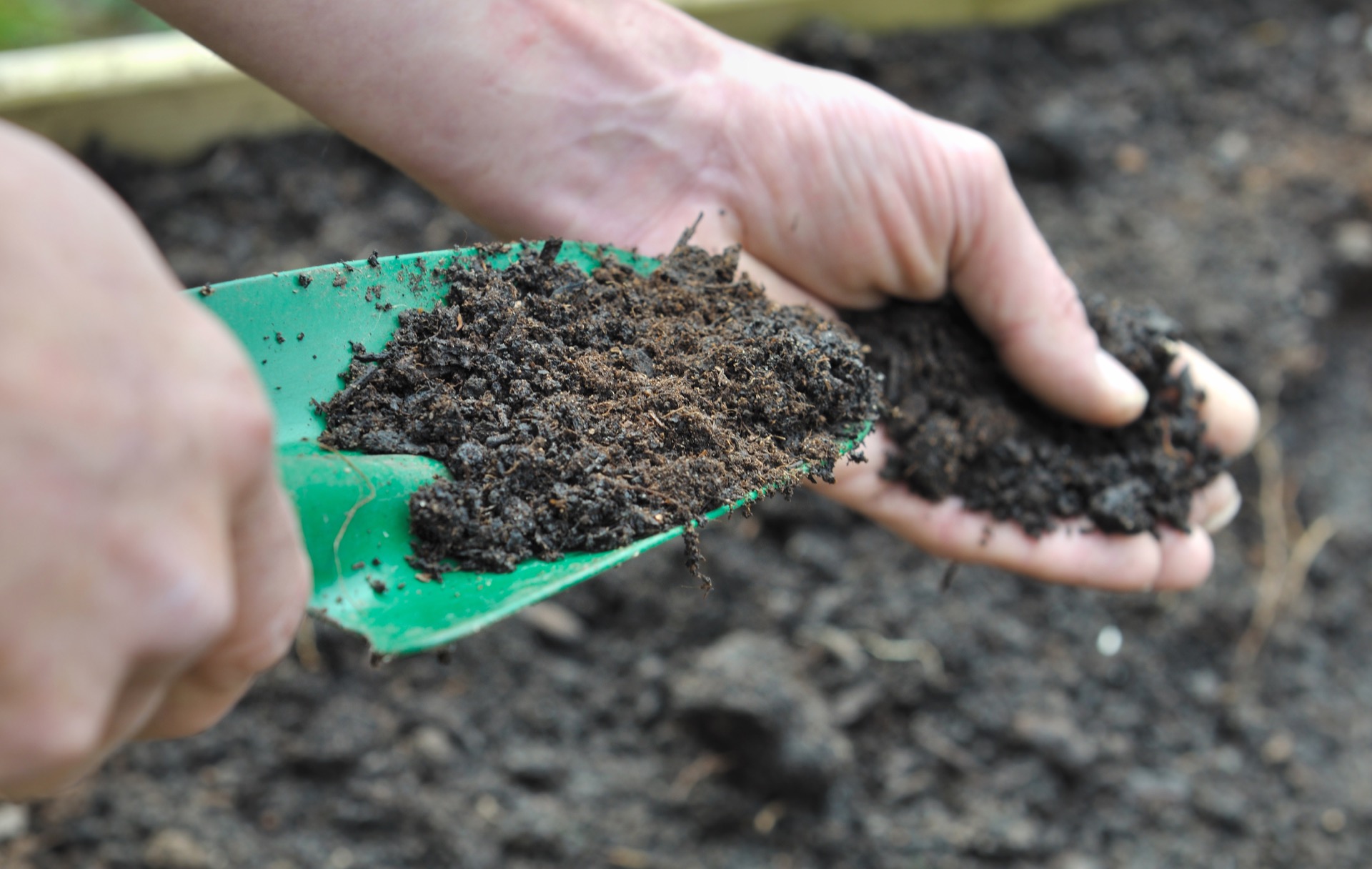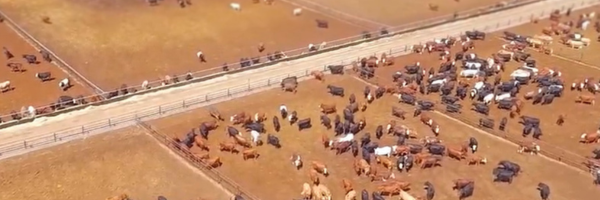
17 Apr Biolink™ Opti-Gut Probiotic boosts feed efficiency in cattle trial
The results from our latest probiotic cattle field trial are in. Biolink™ Opti-Gut probiotic formula improves feed efficiency, where a lower quantity of feed is needed for a measurable increase in animal weight.
Many other research and field studies have proven the benefits of dietary probiotics for cattle production.
Probiotics are non-pathogenic living microorganisms. Farmers have safely used them for years to nurture digestive health, increase an animal’s ability to resist disease and reduce the need for antibiotics.
And by increasing feed efficiency, less feed is needed to increase livestock weight. This has obvious benefits for farmers. Increasing feed efficiency generally leads to increased profitability.
The Biolink™ Opti-Gut Probiotic and the Yarralinka Livestock Co. Cattle Trial
Based on our own experience, we knew that Biolink™ Opti-Gut supported nutrient uptake, feed efficiency, and animal health.
But it’s always good to see our results proven independently. That’s when we started talking to the team at Yarralinka Livestock Co.
Yarralinka is based in South Australia. In partnership with JT Johnson & Sons, they produce high-quality beef for domestic and international markets. The company is committed to safe and ethical research-backed feeding programs for high-quality livestock. It regularly conducts research and development, testing out new products, including the effect of probiotic supplements on the health of its animals. Yarralinka currently runs about 4,000 head of cattle.
They certainly looked like a good fit for Biolink!
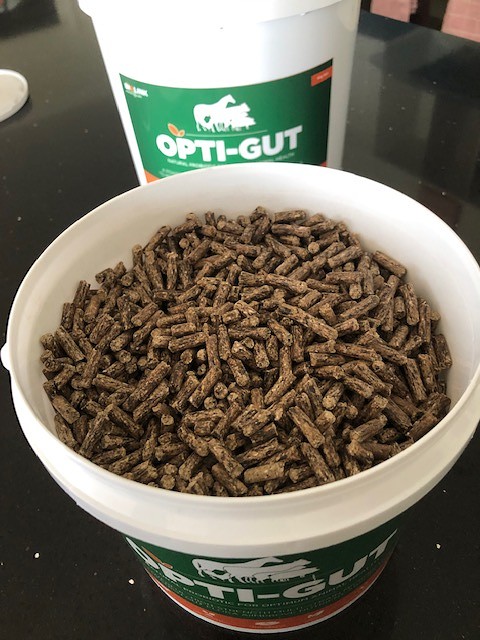
The Biolink™ Opti-Gut Probiotic Trial Process
The trial, ran from August to December 2023. It aimed to assess the efficacy of our probiotic supplement Biolink™ Opti-Gut to improve feed efficiency and nutrient uptake in cattle.
The trial involved three groups: Control Group 1, the Biolink™ Opti-Gut group, and Control Group 2, each comprised 33, 33, and 36 head of primarily British cattle breeds, specifically Angus and Hereford.
Table 1—Summary table for Control Group 1, Opti-Gut group, and Control Group 2, showing the number of heads, Days on feed (DOF), average start weight (kg), and average end weight (kg).
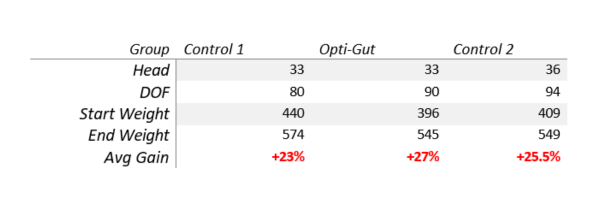
- All groups were initially toothless upon induction. They were sourced from similar climatic conditions in southern Australia’s southeast and Adelaide hills regions.
- The trial commenced with all groups being inducted into the domestic short-fed program over a week apart. The Opti-Gut group started a week after Control Group 1. Control Group 2 began a week after the Opti-Gut group.
- The Opti-Gut group received the probiotic supplement at 30 grams per head per day throughout the feeding period. Rations remained consistent across all groups except for adding Biolink™ Opti-Gut to the Opti-Gut group’s feed.
- Data collection included parameters such as average daily weight gain, feed intake, carcase performance, and morbidity/mortality rates.
- Liveweight measurements were taken at induction and upon departure to slaughter. There were four weigh events during the feeding program to monitor weight gain.
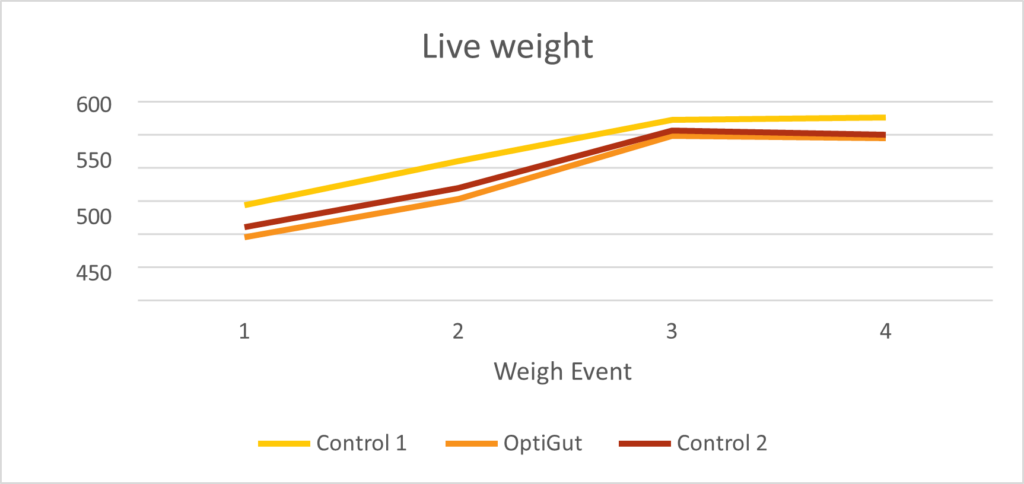
Figure 1- Line graph displaying the average live weight for each group over four weight events during the feeding program.
Feed efficiency was evaluated through daily feed intake records, from which feed conversion ratios (FCR) were calculated.
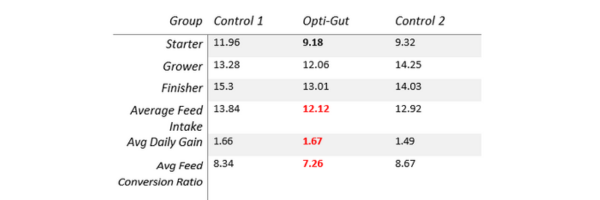
Table 2- Summary table shows the average daily feed intake for each ration type, average feed intake overall, average daily gain (ADG)), and average feed conversion ratio (FCR) for each group.

Carcase performance was assessed based on average carcase weight, dressing percentage, P8 fat score, and marbling category. Throughout the trial, no sicknesses or deaths were recorded in any groups, ensuring a fair comparison of outcomes.
The Opti-Gut Probiotic Cattle Trial Results
- Feed Efficiency: The Opti-Gut group exhibited reduced feed intake while maintaining higher weight gain than both control groups. This result demonstrated increased feed efficiency.
- Weight Gain: Despite starting with a smaller average life weight, the Opti-Gut group showed higher daily weight gain than the control groups.
- Carcase Performance: Although there were slight differences in average carcase weight and dressing per cent between groups, the Opti-Gut group showed comparable results in other carcase parameters such as P8 fat and Marbling category.
Table 3- A summary table shows the average carcase weight (HSCW), average dressing per cent, average P8 fat score and average marbling category (MB) for control group 1, Opti-Gut and control group 2.
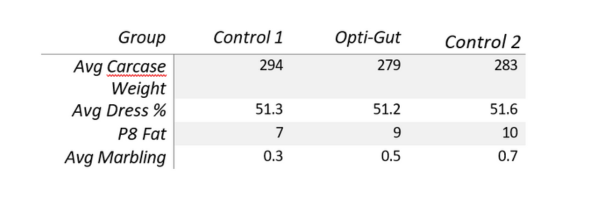
The Conclusion
Supplementation with Biolink™ Opti-Gut led to decreased feed intake while maintaining weight gain, suggesting improved feed efficiency without adverse effects.
Hannah Cummings from Yarralinka Livestock Co. oversaw the Biolink™ Opti-Gut probiotic cattle trial:
“In intensive animal production, feed efficiency and productivity are important, but it’s all tied up with supporting our animals’ health and welfare. Obviously, if our animals aren’t healthy, they won’t perform,” explains Hannah.
“Based on the promising results of this recent trial, we’d like to run another trial to confirm the results. If the results are positive, we’ll upscale Opti-Gut supplementation to the whole herd.”
“We’re also interested in the potential of Opti-Gut to reduce methane emissions. If emissions can be reduced, it can be a real benefit from the consumer perspective.”
If you’d like to talk to us about the trial results, get in touch.
OTHER REFERENCES*:
Direct-fed Microbials for Ruminant Animals* Ja Kyeom Seo, Seon-Woo Kim1, Myung Hoo Kim, Santi D. Upadhaya, Dong Keun Kam2 and Jong K. Ha** Department of Agriculture Biotechnology and Research Institute for Agriculture and Life Sciences. College of Agriculture and Life Science. Seoul National University, Seoul 151-742, Korea



